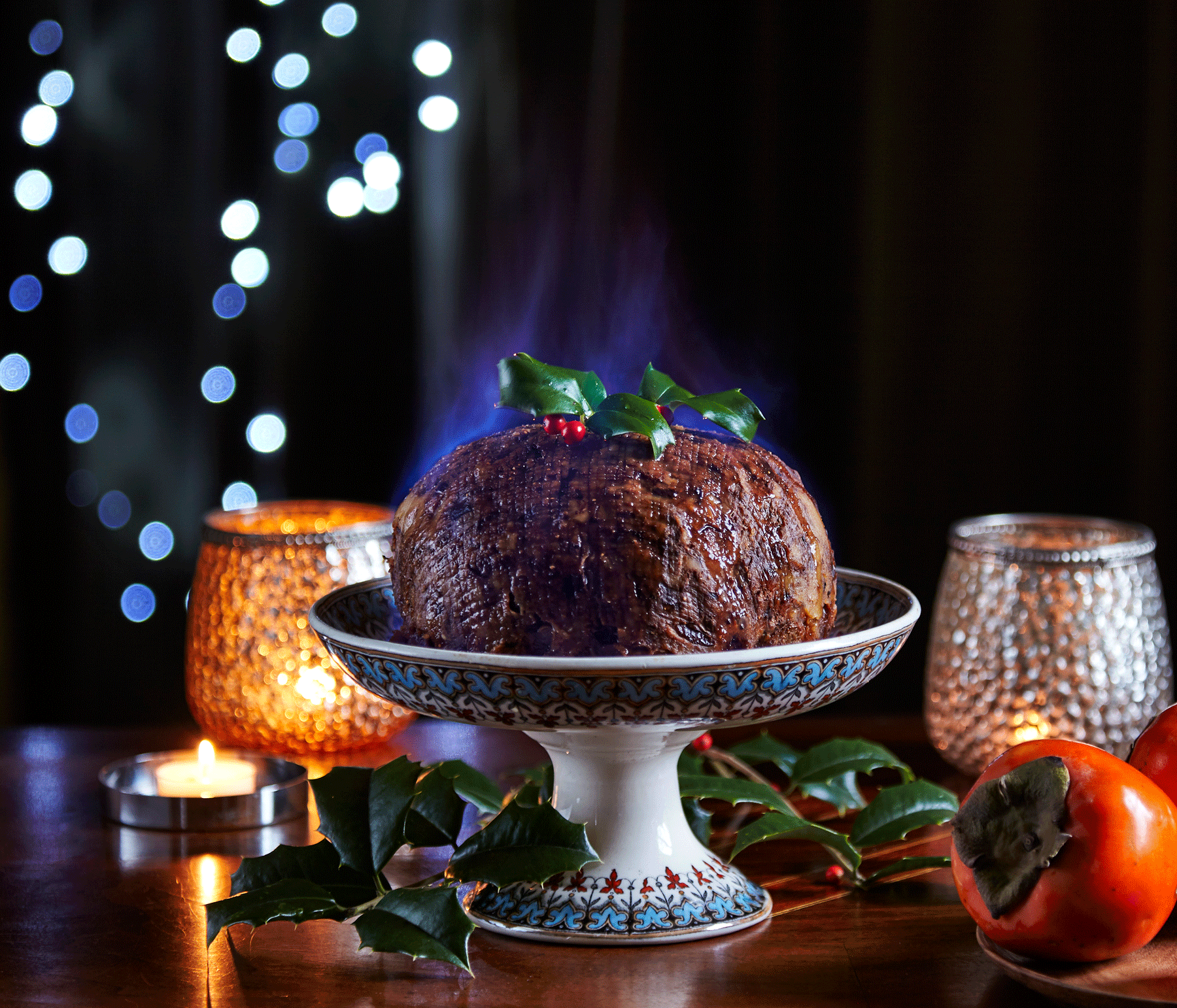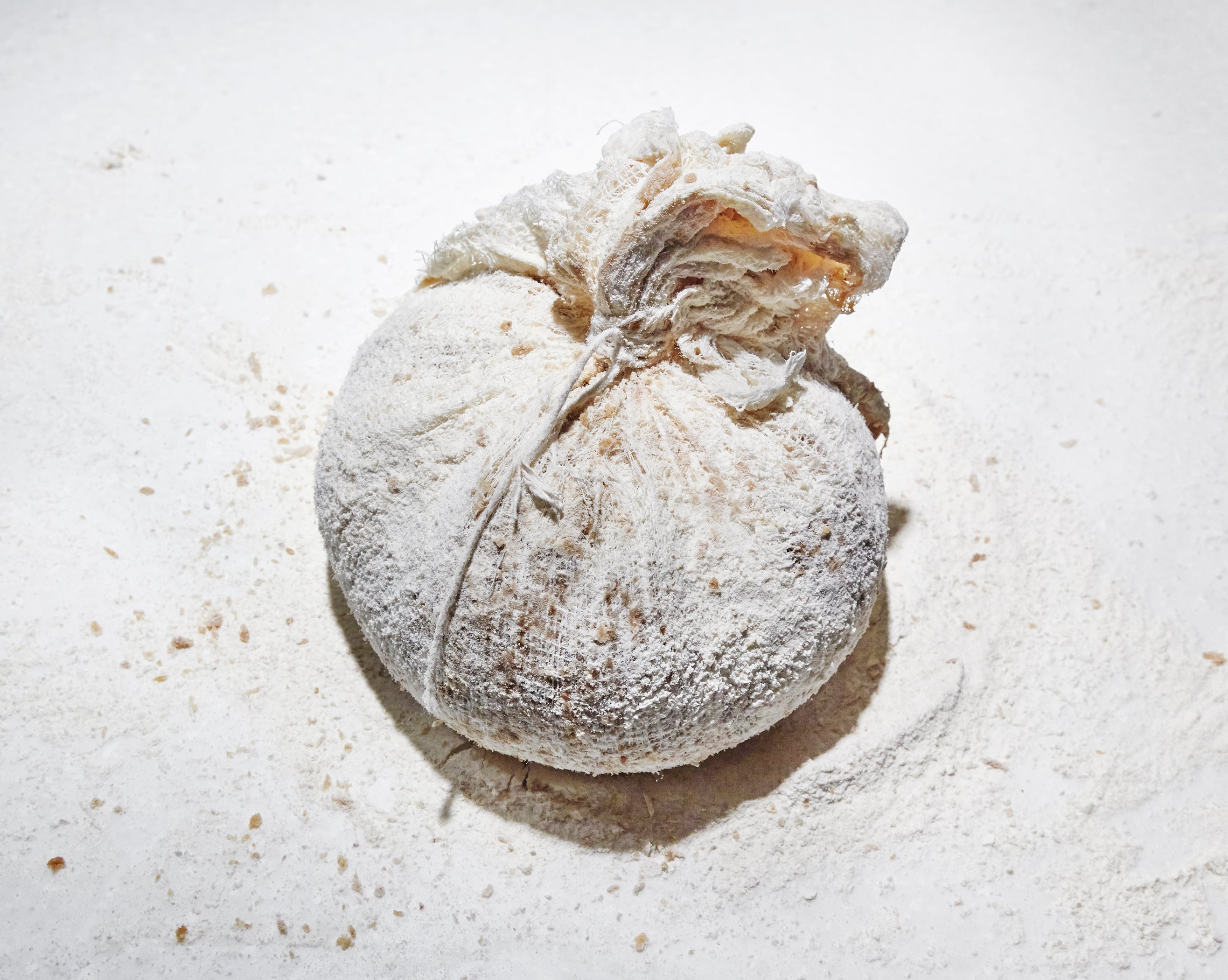
The story of how a medieval stew of meat and dried fruits became a cake that people eat at Christmas.
It seems ridiculous that I, a person who puts her Christmas tree up on Halloween and wholeheartedly believes that Jingle All the Way was a cinematic masterpiece, have never tried the most Christmasy of desserts: plum pudding. This fact is even more ridiculous when you consider the fact that plum pudding (also known in various Christmas carols as “figgy pudding”) is the star of the English holiday table; regular readers of TASTE know that I am an unabashed Anglophile who enjoys dipping my toes into British food history in an attempt to find recipes modern palates would consider potentially edible.
People have been putting whatever ingredients they have on hand in a pot and boiling them since the dawn of mankind, but plum pudding, in a form that we might recognize today, was first born in medieval England, where it was known as pottage.
Who knows what the hell the English were putting into their pottages before 1390. It doesn’t really matter, because thanks to The Forme of Cury—the oldest known English cookbook—we know that by 1390 the Brits were making pretty gross food across the board, so any further research into the past would just lead to more embarrassment and cruel (but oh so easy!) jokes about British cuisine. It is assumed that pottage (which could fall anywhere between a stew and a pudding) was little more than scraps of food scrounged up from who knows where into a perpetually simmering cauldron set over the hearth: errant bits of meat and fat, stale crumbs of bread, foraged vegetables, and chopped-up fishes. The Forme of Cury organized the random ingredients into various recipes that could possibly be the direct ancestor of figgy pudding—like “rapes in potage” or “crustard of fyshee”—but it’s hard to tell since medieval English cookery consisted of the same 15 ingredients mixed up in about a million different ways.

The wealthy would have their cooks make a sturdier version of pottage—a “pudding,” if you will”—that consisted of prime cuts of meat chopped up with their fancy dried fruits, bottles of fine wine, cooked grains, and an ingredient that was even more expensive than silver: spices. Some cooks would pack this mixture into cof fyns made of flour and water (which we know today as pie), while others would tie the mixture up into the stomach of a pig or calf and boil it through, then hang it in a cold room to stay for the winter—creating sort of a big, congealed sausage. As it aged, all that wine and sugar would start fermenting, so when the pudding was finally cracked open at Christmastime, those uppity nobles would get freaking wrecked.
Christmas plum pudding has evolved a bit over the past 600 years, both in method and legend, to get to its current dessert iteration. Some say it should contain 13 ingredients to represent Jesus and his apostles. The stirring of the pudding should be done from east to west to honor the journey of the Three Wise Men. Some make it in October, as in the days of yore, dousing it with brandy every few days to “keep it extra preserved”; devout Anglicans will prepare theirs the Sunday before Advent begins, the last Sunday in the church’s calendar year. At the table on Christmas Day, a sprig of holly is placed on top to represent Jesus’ crown of thorns, and a strong liquor is poured over the pudding and set ablaze to symbolize the burning passion of the Lord.
Like most Christmas customs—celebrating on December 25 in an attempt to lure pagans away from their solstice festival, or burning a Yule log instead of a person as a substitute for a human sacrifice ritual—these are all ways of rebranding older traditions that don’t fully synch up with hard-core Christian values. You can make your pudding whenever you damn well please.